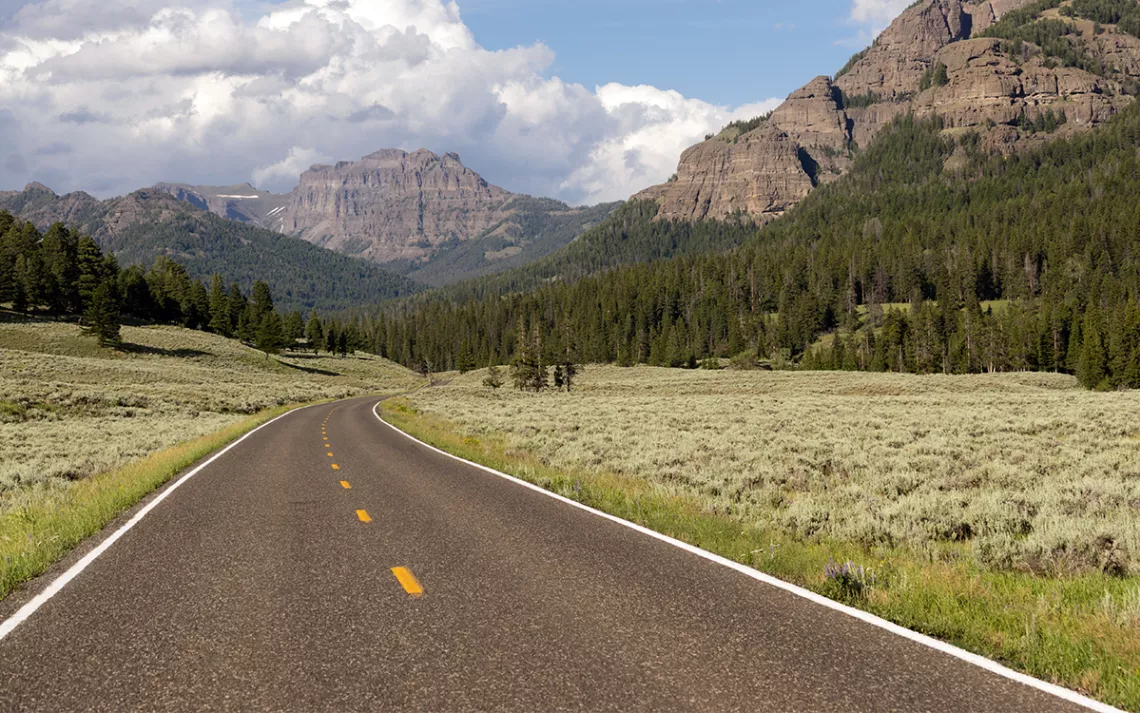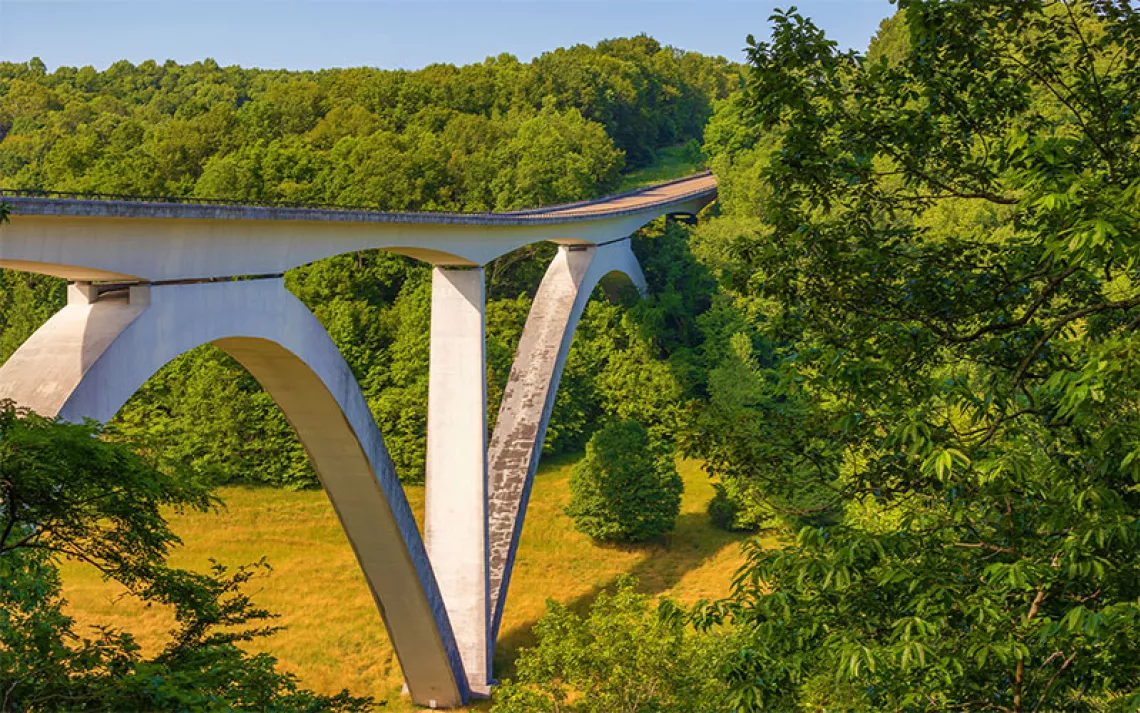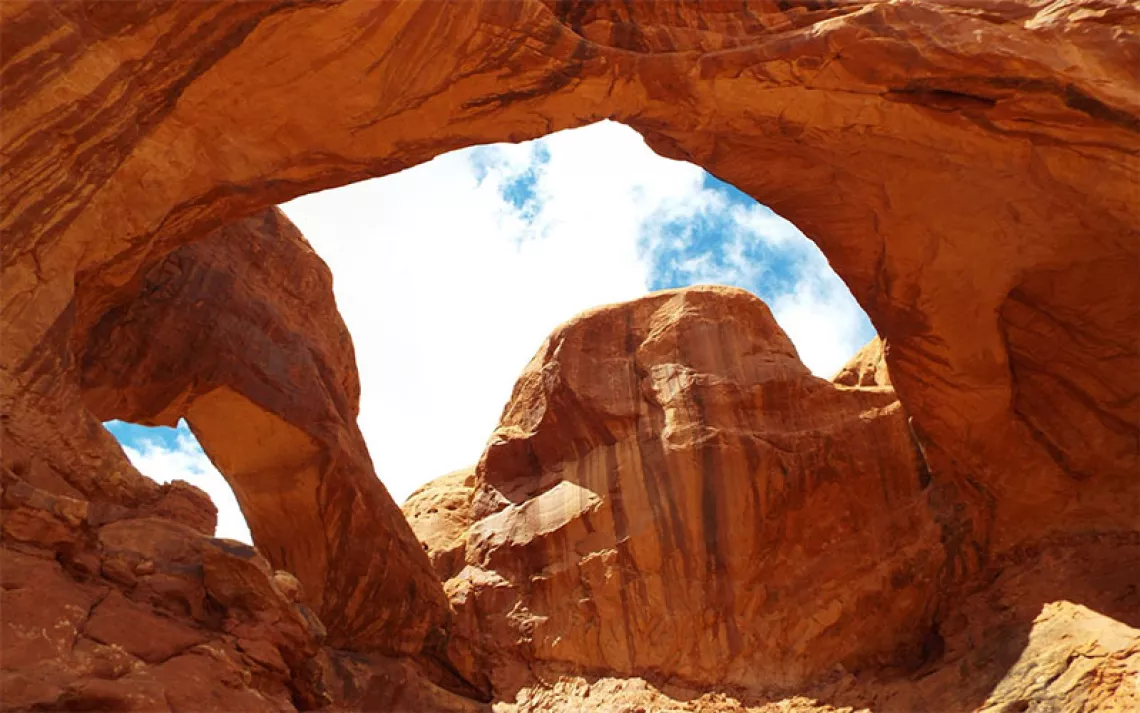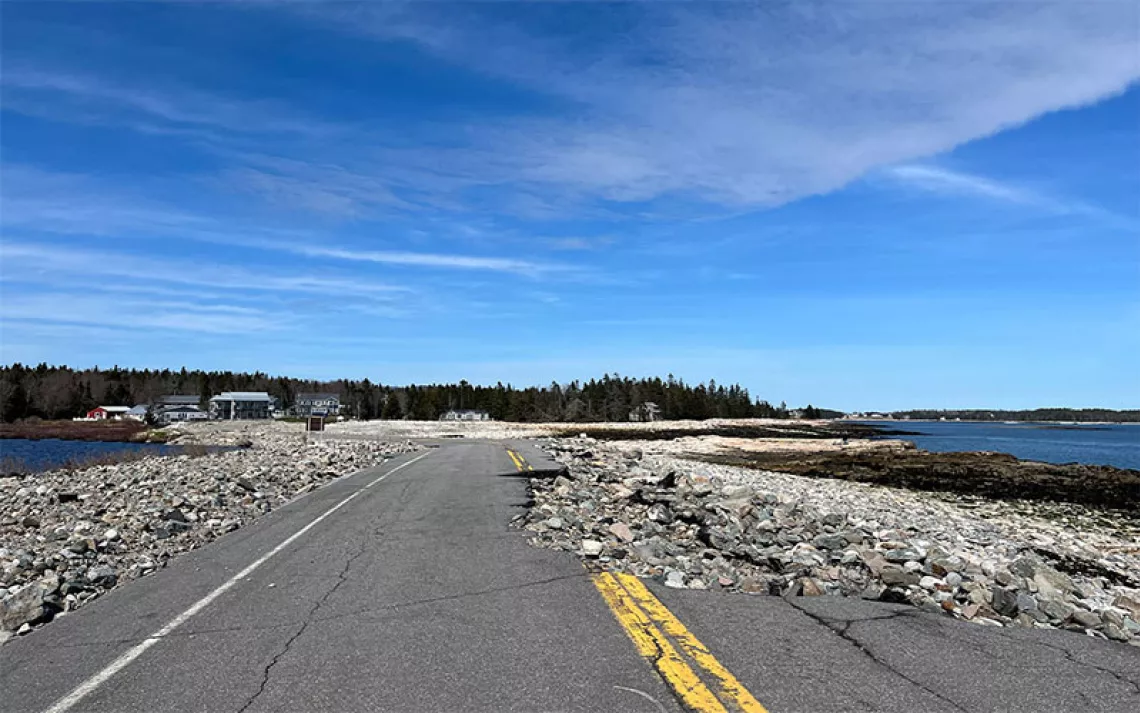The Road to Car-Free National Parks
Faced with more visitor demand, national parks could look to additional car restrictions to balance access with safety

Photo by ChrisBoswell/iStock
Early this year, Canada’s Banff National Park announced that the road leading to Moraine Lake—one of its most popular destinations—would be closed to private vehicles year-round. The decision was made due to an increase in visitor demand at the park; the lots at popular trailheads were so crowded that people were parking outside of designated spaces, and emergency vehicles had trouble getting through.
“It just wasn't safe, and it was not a positive visitor experience,” said Jed Cochrane, a visitor experience manager at Parks Canada. Cochrane was part of the team that made the decision to close the road. He said the decision aligned with the mandate of Parks Canada to both maintain ecological integrity of the park and offer access to the public. “It was really about trying to strike a balance between both of those things,” he said. Now, public shuttles have replaced personal cars on Moraine Lake Road.
Banff isn’t the only national park in North America that has begun to limit private vehicles. Rocky Mountain National Park in Colorado, for example, runs shuttles on its popular Bear Lake Road, encouraging visitors to park their cars at a park-and-ride a few miles away from some of its most in-demand trailheads. From March to November, Zion National Park’s Scenic Drive is inaccessible to private vehicles.
Implementing similar changes in parks nationwide could cut down on overcrowding, eliminate noise pollution, and give wildlife more space. For many Americans, cars are integral to the national park experience. But as visitor demand grows, parks may have to rethink their transportation plans.
Transit advantages, visitor pressures
Alternative transportation systems that replace personal vehicles have myriad benefits to people and wildlife. Such systems, which include shuttle buses, trams, and bikes, “contribute to preserving resources, such as air quality and soundscapes, and they reduce wildlife and auto collisions,” wrote the National Park Service in its budget justification for fiscal year 2023. Like Banff, America’s national parks are dealing with an influx of visitors and traffic issues that may require them to implement more of these alternative transportation systems. In 2021, for example, Rocky Mountain National Park saw over 4.4 million visitors, almost a 40 percent increase over the last decade. Total visitors to US national parks grew too; over the last decade, recreation visits at all parks have risen about 6.5 percent, to almost 300 million visitors per year.
“The demand has just been crushing in some of our national parks, and it requires us to start thinking differently about providing visitor experiences,” said Chris Monz, a professor at Utah State University. Monz studies how visitors disturb ecosystems within national parks, and his research has been used in Rocky Mountain National Park’s decision-making regarding transportation.
As demand grows, existing infrastructure in parks might not be sufficient, forcing them to come up with new ways to move people, he said. Making such systems available can help improve, rather than detract, from visitor experience—no one wants to sit in a line of traffic, wasting their time in some of America’s most beautiful landscapes. There are ecological benefits to removing cars too, since roads can restrict the movement of animals and pose danger to wildlife. “Roads and wildlife, they don’t really mix,” said Monz.
In Wyoming’s Yellowstone National Park, for example, about 75 animals are killed by personal vehicle collisions each year. Between 1990 and 2013, over 5,600 animals were killed in motor vehicle crashes within the National Park Service region, according to a 2019 study of available data. The National Park Service doesn’t keep up-to-date, publicly available data on the number of wildlife killed by cars within parks.
Banff’s now-closed Moraine Lake Road cuts through Bow Valley, an important wildlife corridor for grizzly bears. “In taking 900 cars off the road, we are helping wildlife to be able to move better,” said Cochrane. “That’s a win.” Cochrane added that the park also expects a decrease in its greenhouse gas emissions as a result of the decision.
A legacy of cars in parks
There are plenty of reasons to keep cars, according to Erica Owens, a transportation planner for the National Park Service. Many of America’s national parks were intentionally built to be traveled by car, making car camping and sightseeing via private vehicles some of the primary ways that visitors enjoy the parks, she said. And roads increase access to parks for children, the elderly, and disabled visitors. “The automobile is kind of fundamental to the way in which Americans experience their national parks,” said Monz. “It’s a way in which we can experience the opportunities for scenic vistas, scenic driving, seeing wildlife, getting to trailheads, getting to the backcountry.”
However, at many parks in the fairly remote West, where public transportation is far less accessible, a private vehicle is almost required in order to visit parks, he added. Investing in alternative transportation could improve accessibility, especially for visitors who don’t own their own vehicle. “If we require personal vehicles … for people to get to parks, that is an environmental justice issue,” said Monz. Providing shuttle systems as the primary transportation within a park also adds equity to the visitor experience, he said.
The National Park Service is on board with that idea and said in its 2023 budget justification that it is focusing funding in part on “ensuring equity in transportation by providing better connectivity to underserved communities and promoting modal choices beyond roads—including transit and trails.”
In Rocky Mountain National Park, visitors seem to be embracing the change, said Monz, who is currently studying the effects of the transition on visitor experience in the park. Preliminary data from Monz’s study shows that visitors mostly understand why the changes have been made, and they don’t feel that the changes have been very inconvenient.
The cost of change
For parks that do want to transition their transportation structure away from private vehicles, the change could be expensive. Banff National Park already spends about $6 million on traffic management and shuttles in the Moraine Lake area each year, though it’s too soon to say what the costs will be now that private vehicles are banned from the road. For parks without extensive shuttle systems and dedicated transportation staff already in place, transitioning from private vehicles to public transportation might come at a hefty cost, said Cochrane.
One popular park has already demonstrated that alternative transport can be done on a low budget: Denali National Park, in Alaska. There, visitors cannot take their private vehicles farther than the 15-mile mark on the park’s 92-mile main road, leaving multiple campgrounds, scenic overlooks, and trailheads in the park inaccessible by most private vehicles. As an alternative, the park encourages its 600,000 annual visitors to take advantage of its transit system and bus tours, which are run by a contracted private company. Denali’s only cost to implement the system is paying park staff to oversee it. But the cost is transferred to park visitors, instead, who pay up to $141 for a spot on the bus.
Many other national parks in Alaska have no roads at all; for example, Gates of the Arctic National Park & Preserve, Kobuk Valley National Park, Lake Clark National Park & Preserve, and Katmai National Park are only accessible by bush plane, boat, or by foot. But due in part to their remote locations, these parks also have low attendance. Only 7,362 people visited Gates of the Arctic in 2021, while Kobuk Valley saw just 11,540 visitors. “You can’t protect wildlife and provide access to everyone everywhere,” said Monz. That’s why it’s important to have a “spectrum” of different parks with different levels of accessibility, he said.
Removing private vehicles from America’s more popular national parks probably won’t happen anytime soon, since change takes time, money, and visitor pressure. But as demand for parks grows, so will the need to eventually implement transportation alternatives. “Things are changing, and management needs to change,” said Monz.
 The Magazine of The Sierra Club
The Magazine of The Sierra Club



